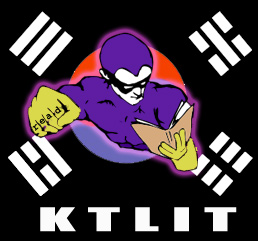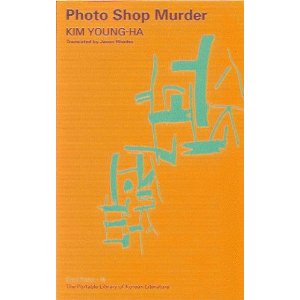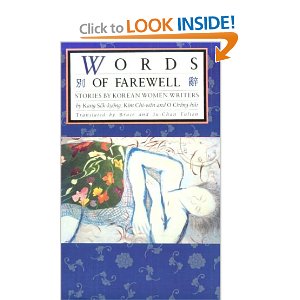NOTE: This article was published in a slightly different form in this month’s 10 Magazine with two nifty sidebars (Kim Young-ha and a “what not to read”) and brilliant photos. You should check 10 Mag out.
If you’ve worked your way through all of Stieg Larsson and the Twilight series is beginning to become predictable (Find neck, insert teeth. Repeat as necessary)? Then it’s time to delve into Korean literature. And there is no better time than now. As few as two decades ago, translated Korean Modern fiction was a dreary procession, tramping slowly but completely over the same dusty terrain: Colonialization, the Korean War; traumas of the political war that followed, and; the social and economic price of industrialization. A western reader, picking these books up and glancing over them, could easily be forgiven for putting them down with a shudder, and taking up less troublesome affairs like grave-robbing or self-mutilation.
For Western readers without knowledge of Korean culture and history, anything published before 1980 might seem a bit archaic and/or opaque. Having spent the first half of last century under the boot of the Japanese colonialists, and the latter half engaged either in an active or passive civil war, Korean modern literature has tended to grimness; combining the light-hearted joi-de-vivre of black-and-white Holocaust documentaries with a pronounced fratricidal tone that the Khmer Rouge would have immediately embraced. Unless you are a fan of history, or uncontrollable weeping, this is the literature to look past.
But a new wave (Hello Hallyu!) of Korean writers (and a sprinkling of evergreen perennials) has put much of that in the past, either moving on to new topics, or melding old topics to themes and stories that English readers can read and enjoy.
For more fun reads, and works with more comprehensible contents, beginners should generally turn their eyes to fiction written in the last 25 years or so. What to read depends on your interest. Are you interested in literature in general? Do you like Women’s Lit? Looking for Modern literature with a Korean flavor? Do plucky family stories pluck your heartstrings? Do you like novels? Novellas? Short stories? Ever been in a Turkish prison?
If you’re looking for an introduction to the literature in general, one of the most common ways to get a quick, mostly enjoyable, and fairly representative take on Korean modern fiction is to dive into the Portable Library of Korean Fiction (PLKF). In fact, if you are in Korea, you might even have come across some of these slender, novella-sized books characterized by single-color, non-gloss covers with truly bizarre reversed-hangul designs. The PLKF is 26 books of short stories/novellas by authors of classic Korean modern literature including Yi Sang (The Wings), Kim Yu-jeong (The Camellias), Kim Moon-soo (The Chronicle of Manchwidang), and Ch’oe Yun (The Last of Hanako). While some of these works do focus on the “older” issues of modern literature that I have previously mentioned, they are nonetheless quite interesting and a quick way to be introduced to a range of Korean writers and fiction. They are also quite inexpensive; costing between 5,000 and 7,000 won depending on bookstore. As a bonus these books are like Seoul taxis; compact, and if you don’t like the one in front of you there will be another along shortly.
If you are a short story fan and searching for an inclusive anthology, look no farther than Land of Exile, which remains the accessible standard. Recently re-released to include more modern stories, this excellently translated work is a good starting point for a reader interested in understanding the general outlines of Korean post-WWII literature. It is organized chronologically, which helps demonstrate the general lines upon which Korean modern literature has developed and expanded.
Also quite good is Modern Korean Fiction: An Anthology, which covers some of the same territory as Land of Exile, including sharing a story. This sharing is a relatively common problem with translation of Korean literature: Because there are certain canonical fictions in the Korean mind, some stories get translated and re-translated, often with slightly different translations of the titles, which sometimes makes it difficult to determine where the duplications exist. Always be certain to carefully examine table of contents and also be aware that different romanizations of author’s names can cause confusion.
There are also collections for specific interests. Over half of modern Korean writers are women. At times women have been edited and published quite separately; at times women have been scarcely published at all. But make no mistake, separated or not, female Korean writers pack a punch, while often writing stories that seem more accessible to foreign readers. By combining the traditional concerns of Korean fiction with family and relationship-based themes, female Korean writers often offer up works that are easier to relate to than those of their male counterparts. Perhaps the most a famous collection is
Words of Farewell: Stories by Korean Women Writers, which can be found on Amazon and contains stories written by Sok-Kyong, Chi-Won and Chong-Hui.
Specific female writers to look for include Park Wan-suh and Ch’oe Yun. Park Wan-suh writes stories like Amy Tan might have if half her family had been murdered. And I mean that in a good way. Ch’oe Yun writes often fantastical stories based on historical events.
Just last year Park released, Who Ate Up All The Shinga, which is an excellent mother/daughter semi-autobiographical story set in the time just before the Korean War. Park’s short story collection, Sketch of the Fading Sun is also worth checking out, and contains one of her most famous short stories, During Three Days of Autumn (also known as Three Days in that Autumn and published in the Jimoondang PLKL series). Park has also written Weathered Blossom, the story of a doomed elderly love-affair in a small novella with the Hollym imprint.
A quick note about the Hollym books: The works are chosen carefully, the covers are extraordinary, the bindings tight, the illustrations superb, and each book features the original Korean text as well as a built-in cloth bookmark. If you see one of these, it’s likely to be a good pick-up.
Ch’oe Yun first came to the attention of English readers with the publication of Last of Hanako which was initially published by the PLKL and later added to Land of Exile in its latest edition. The story of youthful friends who are torn apart by circumstance, Last of Hanako depended on a plot twist that might seem obvious to a western reader. But with the 2008 release of the collection, There a Petal Silently Falls Ch’oe stepped firmly into the forefront of international Korean writers. The novella from which the book draws its title is a horrific story of family tragedy (based on real events in Kwangju in 1980) along the traditional plotlines of Korean literature, but Ch’oe invests the story with such surreal tragedy and a hallucinatory writing that the reader is pulled along. Whisper Yet is the slightest work in the book, and The Thirteen Scent Flower is a surreal, happy-yet-sad, story of an unlikely romance enmeshed in the coarse fabric of larger life.
There are other themed collections as well. If you are one of those people who instinctively head towards the sound of sirens, smell of smoke, screams of children or M. Night Shyamalan movies, The Red Room might be just right for you. The red-covered anthology contains three stories that focus on Korean traumas, including the excellent In the Realm of Buddha by Park Wan-suh. This in not particularly cheery stuff and should not be read near sharp objects or gas lines.
Korean literature also abounds with translated novellas and novels, and here it is useful to know the names of a few authors. Who knows, you might be able to drop some of these names and impress people at cocktail parties? Well, Korean cocktail parties, anyway!
Yi Mun-yol is an interesting writer whose work bridges the gap between the more traditional issues of modern Korean fiction and what might be called the cutting edge. Yi’s classic work Our Twisted Hero is a meditation on the uses and misuses of power, which metaphorically explores the Korean political situation of the 1970s and 80s. The Poet tells an even older story of poet Kim Sak-kat who dishonors his grandfather and suffers considerably for it. An Appointment With My Brother is perhaps his most predictable work, telling the story of a family bisected by the Korean War. But Yi is also capable of stunning modern work as his Twofold Song ably demonstrates with its explosive mix of surrealism and love-story. The word in Korean literary circles is that Yi is working on his first new fiction in over a decade, and if that is true, it is a publication to look forward to.
A longish novel, but quite easy to read due to its episodic structure, is Cho Se-hui’s The Dwarf. The Dwarf is a tremendously affecting and powerful work of social criticism focusing on the forced redevelopment of Seoul in the 1970s, and the human costs that accompanied it. It combines biting realism with a semi-fractured structure that pulls a reader into the difficult and fragmented era the work describes. Cho combines a kaleidoscopic narrative approach, powerful use of scientific symbols, and a dead-flat and deadeye narrative tone. The Dwarf was enormously popular at its first publication, and its key chapter A Dwarf Launches a Little Ball has been reprinted in Korea 245 times as a short story or novella. A potential reader should be certain to get the complete version of this story, rather than the abridged PLKF version.
Kim Young-ha is a resolutely modern writer whose work features an existential edge. His dreamlike, I Have the Right to Destroy Myself, asks questions about art, sex, identity, and death, while speeding through locations in Seoul and overseas. Kim’s deadeye laconic creation of a policeman in Photo Shop Murder (published in the PLKL series in the book Photo Shop Murder) is perfect for anyone who likes the true-crime genre, and as a bonus this book includes the alienated but amusing, What Ever Happened To The Guy In The Elevator? In addition to these, Chi Young-Kim (who translated I Have the Right to Destroy Myself and Lee Dong-ha’s A Toy City) has just translated Kim Young-ha’s latest novel, The Empire of Light (renamed Your Empire is Calling You)
The authors and books mentioned here are only the tip of the translated iceberg, and only intended to be a jumping-off point. I have left out many great authors and great works; I haven’t mentioned Kyung-ran Jo’s Tongue: A Novel, Sok-yong Hwang’s The Guest, the upcoming publication of Kyung-sook Shin’s Please Look After Mom, well.. you get the idea. But once you begin to take a look at modern Korean literature, it becomes your pleasure to track down the rest of it!
PS.. If there is something you feel I missed, or some story or novel you’d like to advocate for? That’s why I have a comment button. 😉






